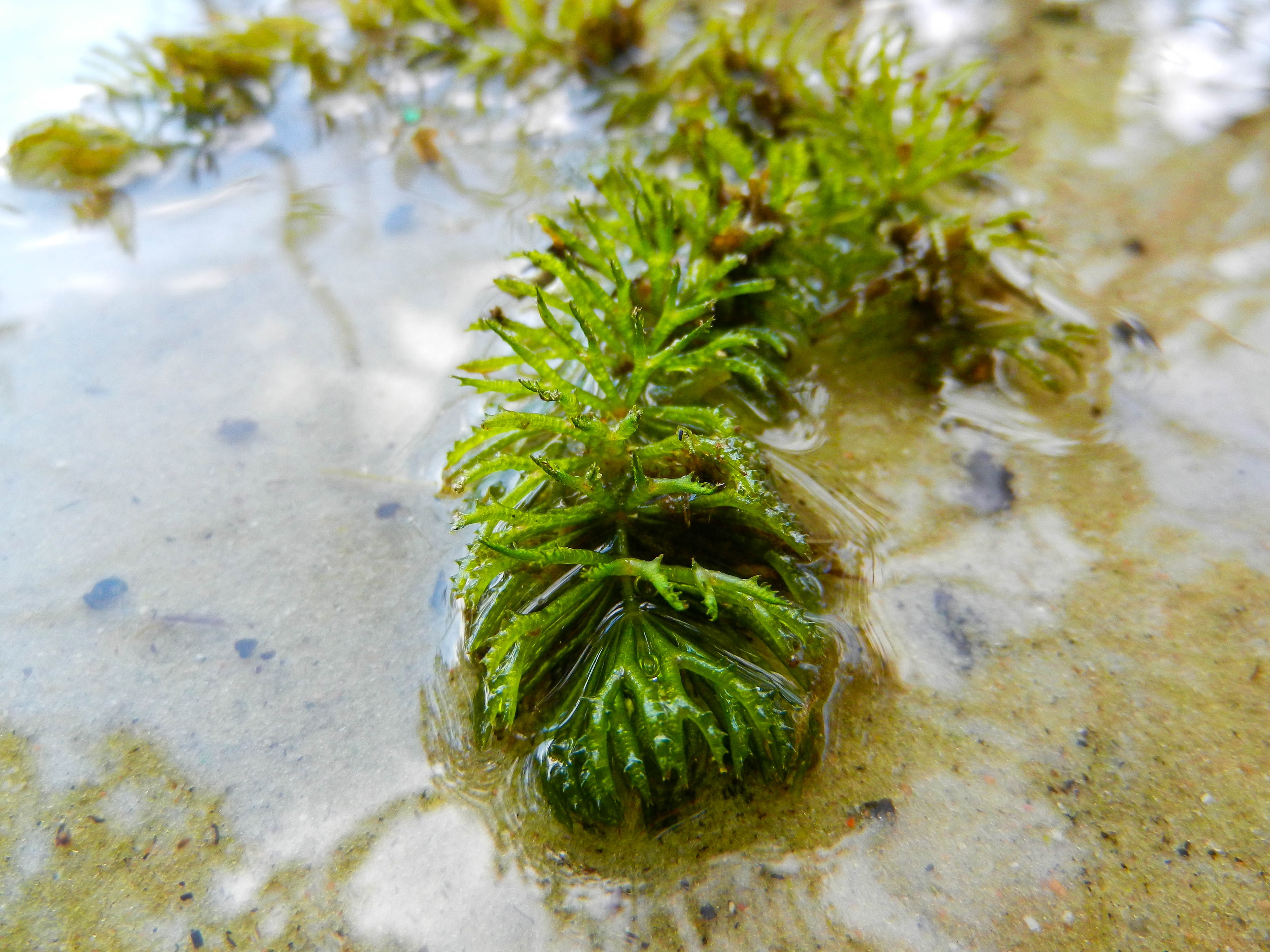Mauritius – Richest algae community in the Indian Ocean

Although small in size, Mauritius has an impressive figure of marine algae. Scientifically named as seaweed, they are photosynthetic organisms that can be as small as bacteria or as big as plants. They are the greenish to brownish leaves that wash up the shore or brush against the swimmer’s feet in the sea. Mauritius has the richest documented algae database in the Indian Ocean [1].
History of algae research on the island
Early records of the algal vegetation of Mauritius dates back to the 1800s. In January 1826, Annabella Telfair recalls ‘seeing algae on shores but none in flower; they were used to feed the ducks and whiten sugar in place of clay by allowing moisture to percolate through them’. Details of the algae collection made by Mrs Telfair in drawings are recorded in the Journal of Botany, 1834 [2].
Research in algae species advanced in giant steps thanks to the works undertaken by Dr Boergesen Frederik. Dr Boergesen described the Mauritian seaweeds in detail based on specimens sent to him by a botanist residing in Mauritius at the time, Dr Vaughan R.E. Specimens from this collection, as well as other samples collected over time, can be seen in the Herbarium of the Mauritius Sugarcane Industry Research Institute (MSIRI). A complete guide to the different species of algae found in Mauritius can be obtained from the website algaebase [3].
Algae of Mauritius
268 species of red algae, 108 species of green algae and 59 species of brown algae have been documented so far [1] (435 species in total). The upper sea surface is occupied mostly by green algae, whereas the deeper parts (below 30m) are dominated by Sargassum, Turbinaria, and Halimeda. The sandy parts of the ocean are covered with the seagrass Syringodium. Seasonal algal blooms can also be found on the ocean floor such as distinct Padina zone and Sargassum zone [4].
Common uses of algae
Algae are used when they are wet because they form mould when they become dry. One very important use of algae for the coastal population is as fertilizer. They are used to enhance the soil quality and as such produce better yields. In Asian countries, algae are a well-known aliment. They are either used to directly prepare food or extracts of seaweeds are added to other food products.
In addition to this, extracts of algae are added to cosmetics, especially in face and body creams. In aquaculture businesses, extracts of seaweed are added to the normal feed of aquatic animals to boost the nutrient levels. The same thing is done for terrestrial animal feed.
Seaweeds have also been tested for biogas production though more research is still to be done in this area [5].
Mauritius and the algae industry
Currently, Mauritius has an EEZ of 1.24 million nautical miles; this represents a huge surface area and consequently a great expanse of algae cover. It presents a good avenue for algae research and exploitation for the economy of the island. Research has shown that algae have good water retention capacity when used as fertilisers on dry land. Since agriculture is one of the basics economic pillars of the island, research in this direction can have a positive impact on both planters and emerging algae industries.
References:
- Bolton, J.J., Bhagooli, R. and Mattio, L. (2012). The Mauritian Seaweed Flora: Diversity and Potential for Sustainable Utilisation. University of Mauritius Research Journal. Vol 18A. [online] Available at https://www.researchgate.net/publication/236935379_The_Mauritian_Seaweed_Flora_Diversity_and_Potential_for_Sustainable_Utilisation [Accessed 22.03.2018]
- Carter, M. and Tatayah, V. (2010). Green Conquest: Naturalists and 1810. Mauritian Wildlife Foundation. Pp 29
- Guiry, M.D. and Guiry, G.M. (2018) Algaebase. [online] Available at http://www.algaebase.org/ [Accessed 11/04/2018]
- Saddul, P. (2002). Mauritius, A Geomorphological Analysis. Moka, Mauritius: MGI, pp 266, 267
- Other uses of seaweeds. [pdf] Available at http://www.fao.org/docrep/006/y4765e/y4765e0c.htm [Accessed 11/04/2018]

I am from India, having 35 years experience in seaweed processing, interested in starting an algae extraction, a unique cold process with out chemicals and zero discharging unit at MAURITIUS
Pingback: The Coastal and Marine Biodiversity of Mauritius - Yo Nature